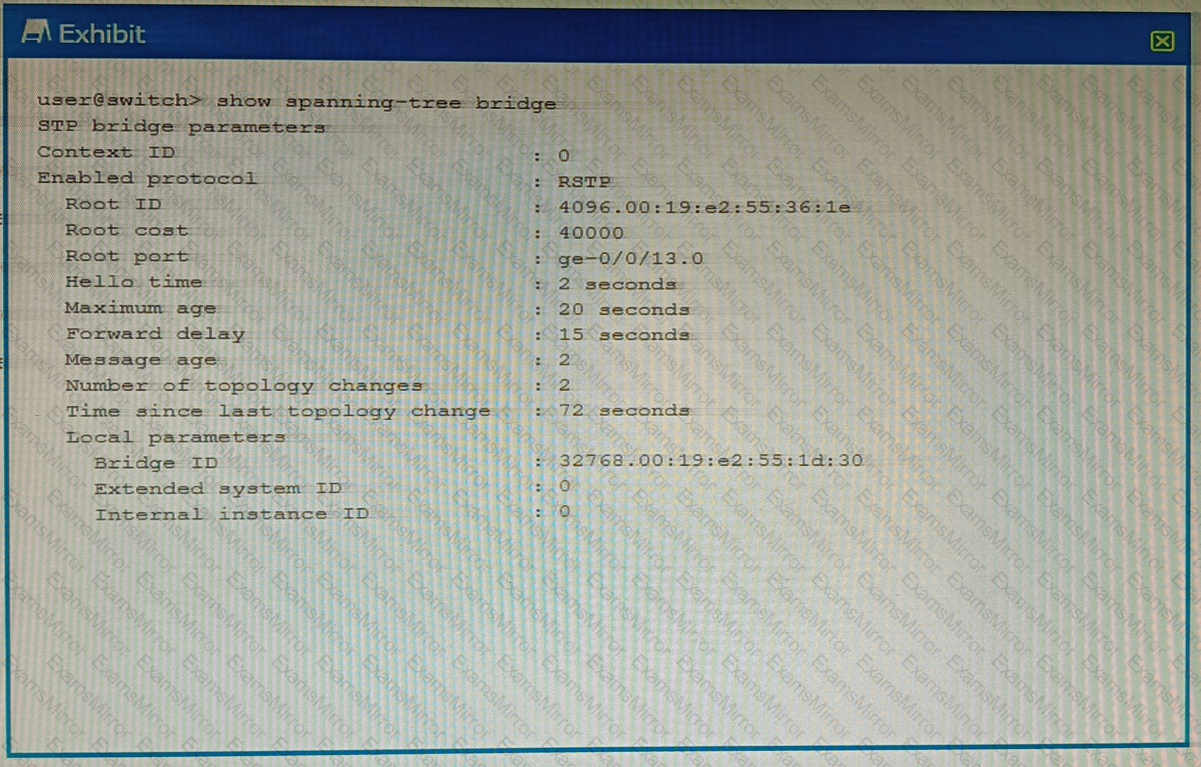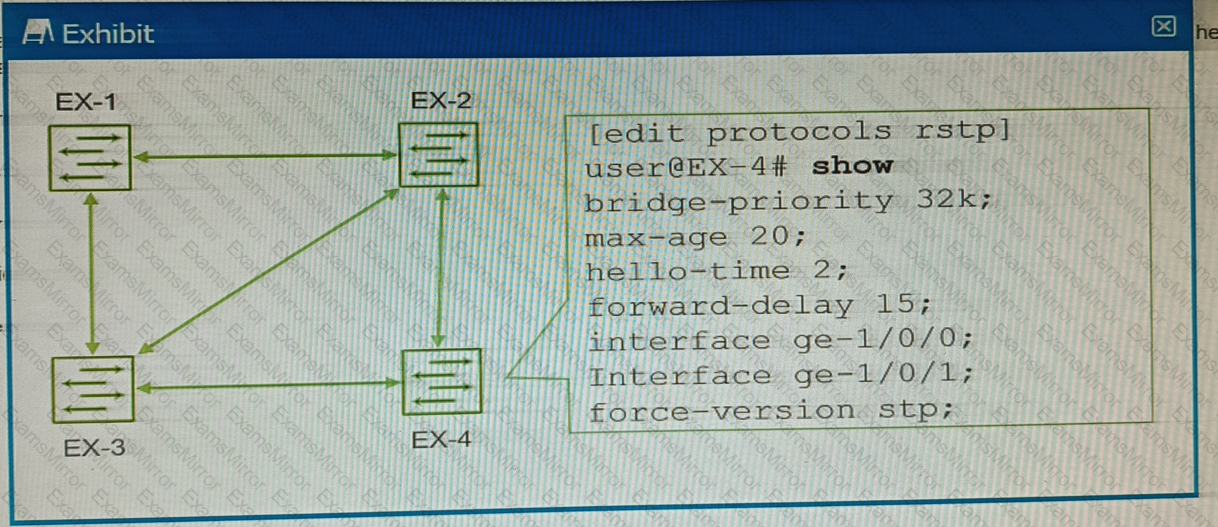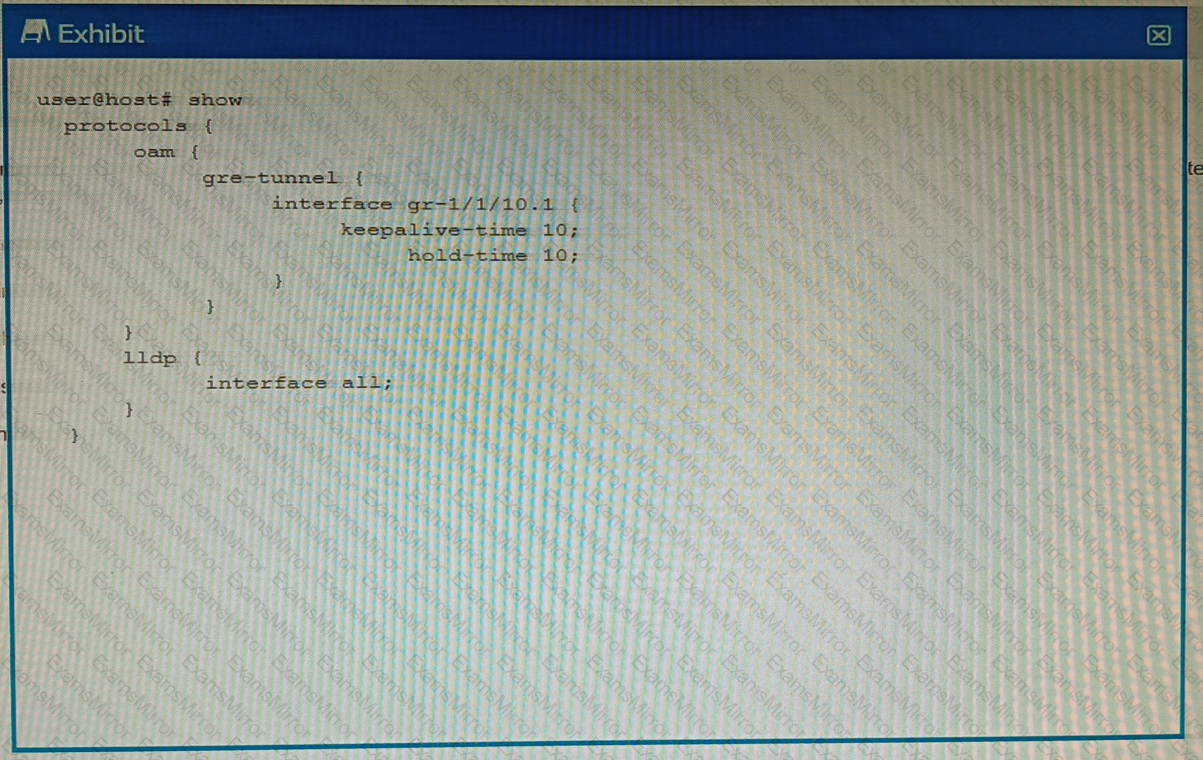Cyber Monday Special Limited Time 70% Discount Offer - Ends in 0d 00h 00m 00s - Coupon code = getmirror
Pass the Juniper JNCIS-ENT JN0-351 Questions and answers with ExamsMirror
Exam JN0-351 Premium Access
View all detail and faqs for the JN0-351 exam
601 Students Passed
93% Average Score
97% Same Questions
What is the default keepalive time for BGP?
Exhibit

Referring to the exhibit, which statement is correct?
A new network requires multiple topology support. You decide to use IS-IS in this situation. Which three protocol topologies are supported in this scenario? (Choose three.)
Which statement is correct about the IS-IS ISO NET address?
Exhibit.

You have configured the four EX Series switches with RSTP, as shown in the exhibit. You discover that whenever a link between switches goes up or down, the switches take longer than expected for RSTP to converge, using the default settings.
In this scenario, which action would solve the delay in RSTP convergence?
Which two mechanisms are part of building and maintaining a Layer 2 bridge table? (Choose two.)
What are two reasons for creating multiple areas in OSPF? (Choose two.)
Refer to the exhibit.

Referring to the output shown in the exhibit, which statement is correct?
Exhibit

You have configured a GRE tunnel. To reduce the risk of dropping traffic, you have configured a keepalive OAM probe to monitor the state of the tunnel; however, traffic drops are still occurring.
Referring to the exhibit, what is the problem?
You are concerned about spoofed MAC addresses on your LAN.
Which two Layer 2 security features should you enable to minimize this concern? (Choose two.)
TOP CODES
Top selling exam codes in the certification world, popular, in demand and updated to help you pass on the first try.
